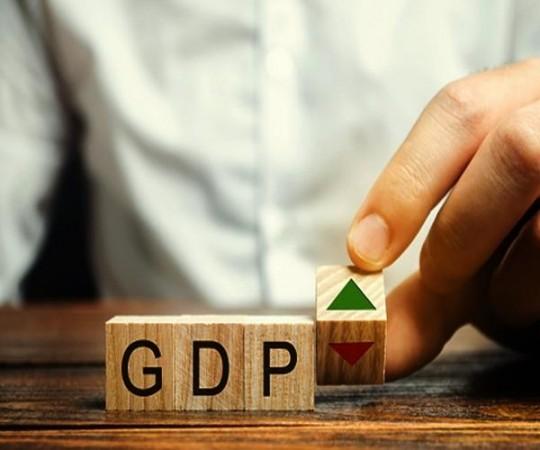Low base, along with pent-up demand as well as easier Covid restrictions, lifted India's first quarter FY22 GDP growth rate to 20.1 per cent.
In 2020, the pandemic had battered the country's GDP which had contracted by 24.4 per cent during Q1FY21.

India's GDP at constant 2011-12 prices has been estimated at Rs 32.38 lakh crore, as against Rs 26.95 lakh crore in Q1FY21.
Last year, the pandemic-triggered national lockdown during Q1FY21 had a massive impact on the economy. It was only on June 1, 2020 that the partial unlock measures were implemented.
Unlike last year, the lockdown in 2021 was more regional in nature, and production and manufacturing by several industries were allowed this time.
In a poll of economists, IANS had, on August 27, predicted that based on the recovery, India's GDP Q1FY22 is expected to grow by anywhere between 14 and 24 per cent. The RBI, after the recent Monetary Policy Committee meeting, had projected country's Q1 GDP to grow at 21.4 per cent.
"GDP at Constant (2011-12) Prices in Q1 of 2021-22 is estimated at Rs 32.38 lakh crore, as against Rs 26.95 lakh crore in Q1 of 2020-21, showing a growth of 20.1 per cent as compared to contraction of 24.4 per cent in Q1 2020-21," said the NSO, in the Q1FY22 GDP estimates.
"Quarterly GVA at Basic Price at Constant (2011-12) Prices for Q1 of 2021-22 is estimated at Rs 30.48 lakh crore, as against Rs 25.66 lakh crore in Q1 of 2020-21, showing a growth of 18.8 per cent."
Excludes subsidies
The GVA includes taxes but excludes subsidies. On a YoY basis, Q1 GVA for 2021-22 from the agriculture, forestry and fishing sector showed a growth of 4.5 per cent, against 3.5 per cent in the same quarter of 2020-21.
Nevertheless, the GVA in Q1 2020-21 from the manufacturing sector grew 49.6 per cent, as compared to a de-growth of (-) 36 per cent in the corresponding quarter of the previous fiscal.
Similarly, the mining and quarrying sector declined by 18.6 per cent against previous year's contraction of (-) 17.2 per cent.
"In line with our expectation, the YoY GDP growth soared to 20.1 per cent in Q1 FY2022, with the low base of last year's stringent nationwide lockdown concealing the impact of the second wave of Covid-19," ICRA's Chief Economist Aditi Nayar said.
"However, the sharp YoY expansion in Q1 FY2022 is analytically misleading, with a sequential slowdown of 16.9 per cent over Q4 FY2021 and a shortfall of 9.2 per cent relative to the pre-Covid level of Q1 FY2020."
India Ratings & Research's Principal Economist Sunil Kumar Sinha said: "Although the healthy GDP growth numbers are mainly due to the base effect, yet it indicates that, despite Covid 2.0, the economic activities remained alive as the local or regional restriction imposed were not as stringent as they were during the Covid 1.0."
Covid situation eases
"Several high frequency indicator data such as power generation, fuel consumption, auto sales, railway freight etc for April and May 2021 had been showing this. In fact, these data also indicated that in select cases the rebound has been faster after the Covid 2.0 than Covid 1.0."
Acuite Ratings & Research's Chief Analytical Officer Suman Chowdhury said: "Acuite continues to maintain a tone of cautious optimism for the remainder of FY22 with the economy expected to be provided momentum by the approaching festive season, accommodative fiscal and monetary policy backdrop, vaccination progress along with better global growth outlook which will continue to be favourable for exports."
"As such, we continue to retain our FY22 GDP forecast of 10.0 per cent with some downside risks emanating from the possibility of another wave of Covid, besides a long term weakness in consumer sentiment, jobs, and incomes."
Deloitte India Economist Rumki Majumdar said: "GDP for Q1 has been accurately close to our lower end of the baseline projections published in June."
"This suggests that our relatively modest baseline assumptions are holding true. If the recovery path is close to what we predicted, India will see a growth of 9 per cent this fiscal year."















